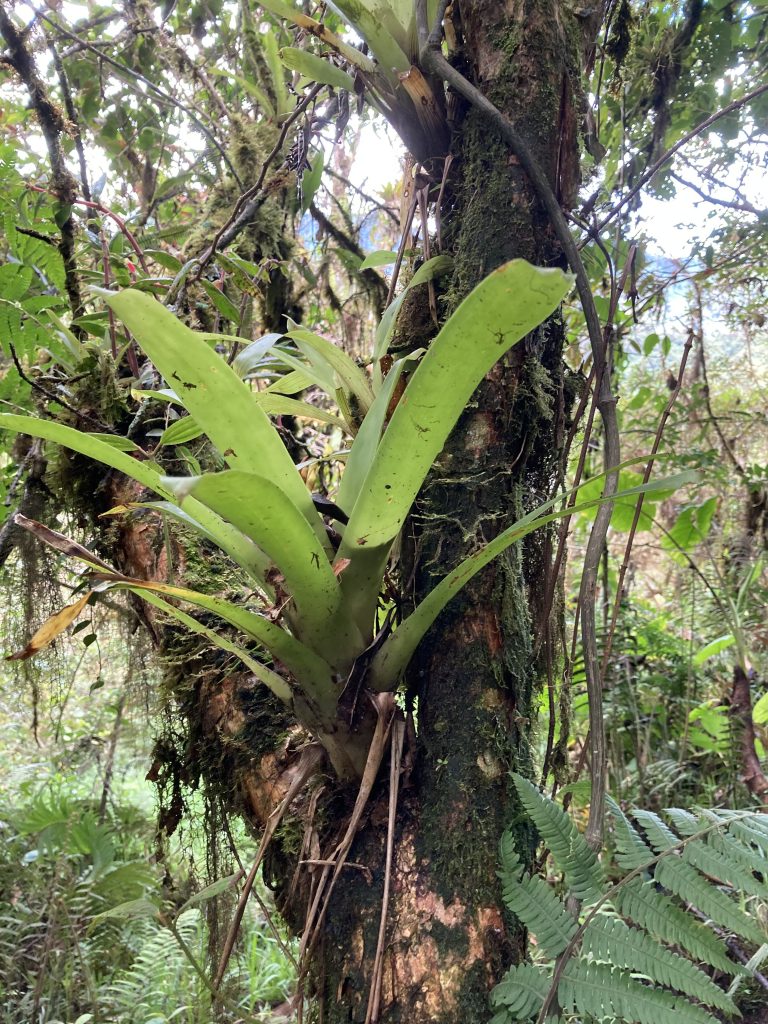Naturally contained habitats
Experimental manipulations of organism abundances can provide clear tests of ecological theory. While it is often easy to manipulate plant abundances, tests of multi-trophic theory require manipulation of animals as well – and animals, being mobile, can behaviourally respond to manipulations. For example, increasing the density of a species can simply result in individuals leaving the study area when resources grow scarce. Fencing the study area can result in unnatural behaviour that confounds the experimental manipulation. One solution is to conduct experiments in small, naturally contained ecosystems, where animals typically do not disperse except at certain life stages (e.g. following pupation) or infrequently (e.g. by phoresy). Huffaker popularized this approach in the 1950s with mite communities on oranges, and since then major contributions to ecology have been made with experiments in systems as diverse as rockpools, pitcher plants, and mangrove islands (Srivastava et al. 2004).
Bromeliad ecosystem

Bromeliads represent a diverse group of herbaceous plants mostly found in the tropical Americas. Our group focuses on epiphytic tank bromeliads, which have leaf bases tightly pressed together in a rosette, creating a series of watertight compartments. They obtain most of their nutrition from decomposing dead leaves and arthropod carcasses and feces that fall inside the rosette. Bromeliads are a unique habitat composed of an aquatic and a terrestrial component. While the former is mostly utilised by arthropods with aquatic stages (e.g. several species of mosquitoes or damselflies), the latter is mostly used opportunistically by organisms like spiders or ants. In a way, bromeliads can be seen as islands of freshwater habitats in terrestrial ecosystems. Their continental distribution, high natural abundance, and relative simplicity and characterization of their food webs has allowed our lab to explore a broad variety of ecological questions.
- Link to field guide (morphological and genetic): https://blogs.ubc.ca/costaricapitillafieldguide/
- Link to field guide (morphological): https://www.zoology.ubc.ca/~srivast/pitilla/index.html
Treeholes
Treeholes are natural cavities in trees that get filled with litter and rainwater and are colonized by aquatic insect larvae and other invertebrates. These small and closed habitats are a great system to study whole communities, but, in contrast to bromeliads, they seldom naturally occur in high enough densities to run large studies. So instead, we use black plastic containers attached to deciduous tree trunks as artificial treeholes. We know through previous work that the insects like these containers as much as natural treeholes!
In the past, we only used this system to answer ecological questions in the tropics, but following travel restrictions due to the COVID-19 pandemic, we started using it to answer questions centered around urban ecology here in the Lower Mainland of British Columbia

- Link to field guide https://www.zoology.ubc.ca/~srivast/treeholes/
- Link to Project Treehole website: https://projecttreehole.wordpress.com/
Forest fragments

Forest fragmentation is not only a major ecological issue across the globe, but allows us to test ecological theory in a natural setting. In our work, we explore the impact of forest fragmentation on ecological communities in a tropical rainforest setting, focusing primarily on small container ecosystems such as bromeliads and treeholes, or mammalian species. We have studied how the size of a given forest fragment influences ecological functions at the scale of entire treehole communities, and the presence and distribution of mammalian species.